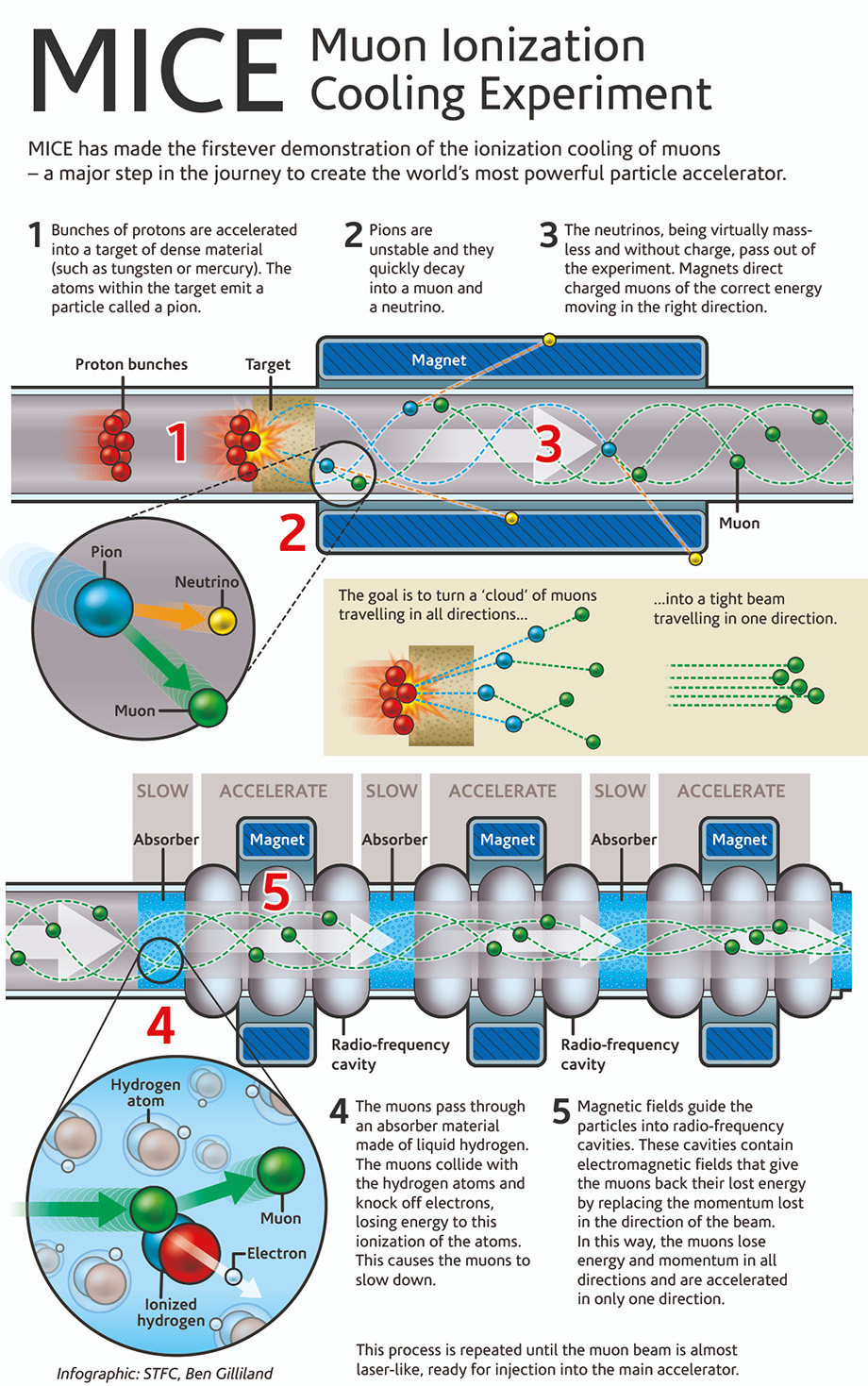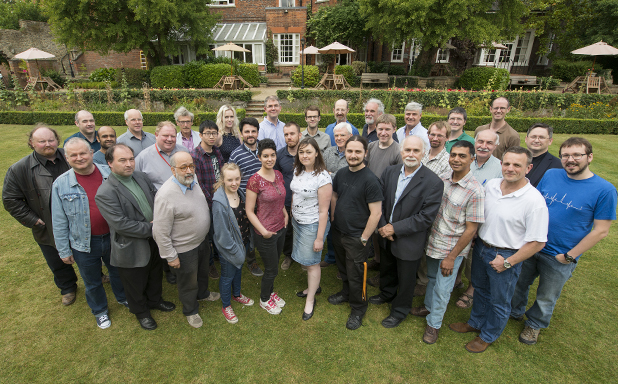The next generation of particle accelerator, which scientists hope could help unlock exciting new areas of physics, has taken a ‘game-changing’ step forward with the demonstration of a new technique known as ionization cooling.
Since the 1930s, particle accelerators have been used to make ever more energetic proton, electron, and ion beams – the most famous and powerful being the Large Hadron Collider (LHC) at CERN in Switzerland and France. These beams have been used in practically every scientific field, from theoretical physics and pharmaceuticals, to microchips for computers.
Now, the Muon Ionization Cooling Experiment (MICE), an international collaboration that includes Brunel University London, has shown that a completely new type of accelerator – one which uses sub-atomic particles called muons – could be just around the corner.
A muon accelerator is seen as a leading candidate to replace the LHC, potentially providing at least a ten-fold increase in energy for the creation of new particles, including the mysterious neutrino, a virtually mass-less particle that is devilishly tricky to study with current technology.
Until now, the challenge for researchers has been how to capture and channel enough muons into one place to focus a beam suitable for experimentation. The breakthrough – which has been published in Nature – appears to have now been made, thanks to the successful demonstration of ionization cooling at the ISIS Neutron and Muon Beam Facility in Oxfordshire.
HOW DOES MICE WORK?
“To make muons, you need to start with a proton beam like the one we have at the Rutherford Lab’s ISIS ring,” explained Brunel particle physicist Dr Paul Kyberd, who played a key role in the project.
“We put a target in the ring which when struck by the beam produces a fan of particles called pions. Magnets are used to capture some of these pions and direct them into the MICE experiment, where they decay into Muons.
“Once you’ve captured muons in this way, you can put them through a cooling channel – it’s this cooling channel that will be needed for a new accelerator.”
Once the muons have been through the cooling channel, which contains liquid hydrogen cooled to around minus 250 degrees Celsius, they can then be fed back into an accelerator as a tight and stable beam. At this point the beam can be split and accelerated around the ring in opposite directions to create a Muon Collider, or be left to further decay into neutrinos.

“One of the things we hope to do is understand the properties of neutrinos,” said Dr Kyberd.
“Whereas a pion beam decays into lots of different types of neutrino, a muon beam decays into just two types of neutrino. It’s far less messy than a pion beam as you know exactly what the ratio of neutrinos will be. A better understanding of neutrinos has possible implications in lots of places, for example, finding out why we find lots and lots of matter, but very little anti-matter.”
Muon beams themselves have many potential uses too, including being used to see through really dense, thick materials that X-rays can't get through, and as a catalyst for nuclear fusion, both of which the MICE team hope can now be enabled by their improved beams.

The MICE collaboration team
Dr Kyberd added: "MICE uses cutting edge engineering to produce a tool which will allow us to explore the boundaries of our understanding. I was excited to be part of the line of human endeavour which stretches back to the early flint tool makers"
Prof Paul Soler from the University of Glasgow, the UK Principal Investigator for MICE said: "Ionization cooling is a game-changer for the future of high-energy muon accelerators, such as a muon collider, and we are extremely grateful to all the international funding agencies, including STFC in the UK, for supporting the experiment and to the staff at the ISIS neutron and muon source for hosting the facility that made this result possible.”
'Demonstration of cooling by the Muon Ionization Cooling Experiment', by Bogomilov et al., is published in Nature.
Reported by:
Tim Pilgrim,
Media Relations
+44 (0)1895 268965
tim.pilgrim@brunel.ac.uk